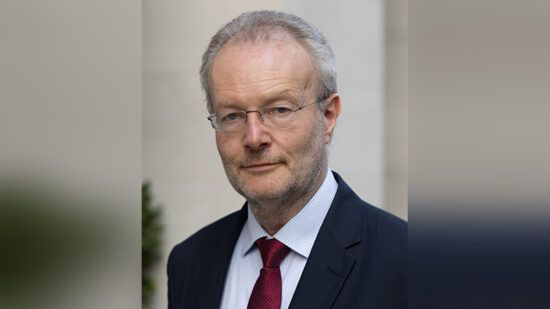As UNCDF and the OECD acknowledged in our joint publication, Blended Finance in the Least Developed Countries 2020, the digital revolution over the past 10 years has not only transformed how people access and use financial services, but has also enabled the growing integration of finance with the “real economy” in such areas as clean energy, agriculture, entrepreneurship, and health and education.
This disruption has created rapid growth for a wide range of SMEs, and business models that can leverage blended finance solutions to reach large scale. For example, energy service companies that use digital pay-go solutions have become a new and rapidly growing asset class for blended finance investors. In LDCs, energy service companies have become some of the major recipients of on-balance-sheet concessional lending, enabling follow-on investment by domestic financial institutions or international impact investors.
Digital technologies have also profoundly transformed options to mobilise finance and align its deployment with the SDGs, as highlighted in the report of the United Nations Task Force on Digital Financing of the SDGs. Innovations in agent banking and alternative delivery channels have made it possible to mobilise and channel informal savings at large scale into the formal financial system. Digital technology can facilitate the reinvestment of those savings into long-term investments in priority socio-economic infrastructure (roads, schools, health centres, etc.) and localise those investments in districts where individual savers will directly benefit from improved services and from receiving financial dividends.
The digital finance revolution is also disrupting and expanding how blended finance solutions can be deployed to contribute to the financing of the SDGs. It is doing so by transforming the potential for domestic resource mobilisation and for citizens to have a voice in how their savings are invested, or by expanding blended finance solutions to SMEs on a scale that was unthinkable before. This emerging generation of blended finance solutions rests on an innovative use of data that enables new models of resource mobilisation (even from very small individual savings) and their aggregation to finance a wide range of economic priorities, from socio-economic infrastructure to women-led MSMEs, supported by de-risking instruments and donor-funded technical assistance.
The feasibility of using digital savings for reinvestments by local and national governments in key socio-economic infrastructures is being tested by a2i in partnership with UNCDF as one of the pathfinder projects of the United Nations Task Force on Digital Financing of the SDGs.
Pre-Covid-19, it was forecasted that, in 2020, savings by Bangladeshi citizens totalling $118.4bn could be tapped to finance the SDGs (including $61bn formal savings, $41bn informal savings, $14bn from remittances flows, and $2.4bn zakat funds). Digital finance offers the potential to transform Bangladeshi citizens from micro-savers to micro-investors, enabling the aggregation of those savings at very low cost, with the requisite guarantee and liquidity mechanisms built into investment instruments that could fund the socio-economic infrastructure that would directly improve their lives.
The infrastructure budget in Bangladesh for the fiscal year 2019–2020 stood at $24bn, 48% of which was financed through external sources; this is expected to grow substantially by 2030 due to funding requirements to meet the SDGs. Harnessing domestic savings could help both to lower the dependence on external debt and to strengthen Bangladeshi citizens’ stakes in and ownership of those investments. More generally, connecting national SDG priorities and digital financing opportunities offers a tremendous scope for growth and is an area currently being advanced by UNCDF. The deployment of this type of solution calls for blended finance models that include sovereign guarantees to protect the integrity of those citizens’ savings or de-risk those infrastructure investments.
Digital finance is also accelerating the formalisation of remittance flows, which can directly benefit migrants and their families, not only through lower fees, but also by creating a financial transaction history that can facilitate access to other financial services, especially loans.
Blended finance models can be deployed to further support the reinvestment of remittances in priority sectors, with a government or third-party guarantee. In Nepal, UNCDF supported a partnership between Al Fardan Exchange in the United Arab Emirates and Laxmi Bank to test a new use case to securitise remittance flows to extend un- collateralised credit based on the remittance transaction history and other alternative data sources, using a blockchain lending platform.
Digital innovations are also transforming blended finance models for MSME access to capital markets. In the context of the United Nations Task Force on Digital Financing of the SDGs, EcoCash and Financial Securities Exchange (FINSEC), with support from the Investors Exchange (IEX), the Food and Agriculture Organization of the United Nations and UNCDF, have set up an MSME investment platform (GEM Portal) in Zimbabwe linked to FINSEC that leverages alternative data generated from the major mobile money operator in the country and banks, to create investment profiles and bridge the long-term financing gap between high-potential MSME and investors.
This platform will offer a new venue for investors, banks and venture capitalists to invest in MSMEs in Zimbabwe in a totally new way. With non-traditional and digital mechanisms of enterprise assessment implemented through this platform, the role of DFIs in this initiative to catalyse and unlock private capital to be invested becomes important, by deploying guarantee instruments and concessional capital.
In addition to improving risk pricing, the exponential growth in data gathering and processing that is enabled by the digital revolution has helped to increase both the alignment with the SDGs and the impact monitoring of blended finance investment decisions.
Digital platforms such as the Future of Sustainable Data Alliance are advancing data-driven approaches to the effective integration of environmental, social and governance factors into decision making processes, and greater incorporation of SDG-related risks and impacts in financing decisions. In that respect, the digital revolution also holds the potential to help further align blended finance deployments to the SDGs.








